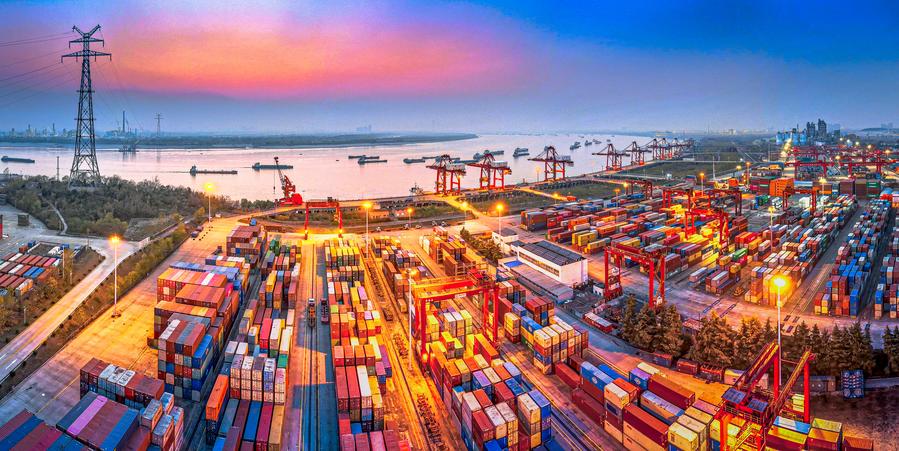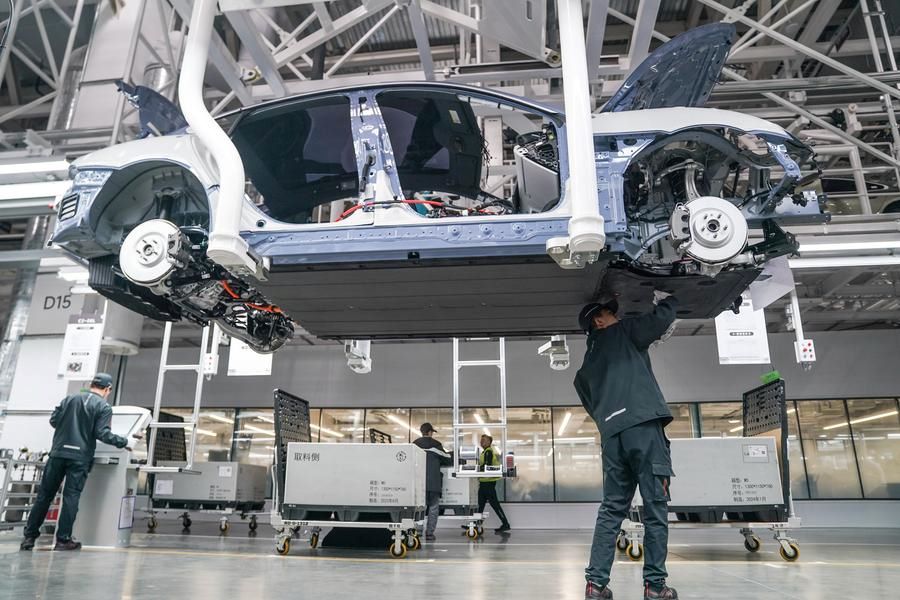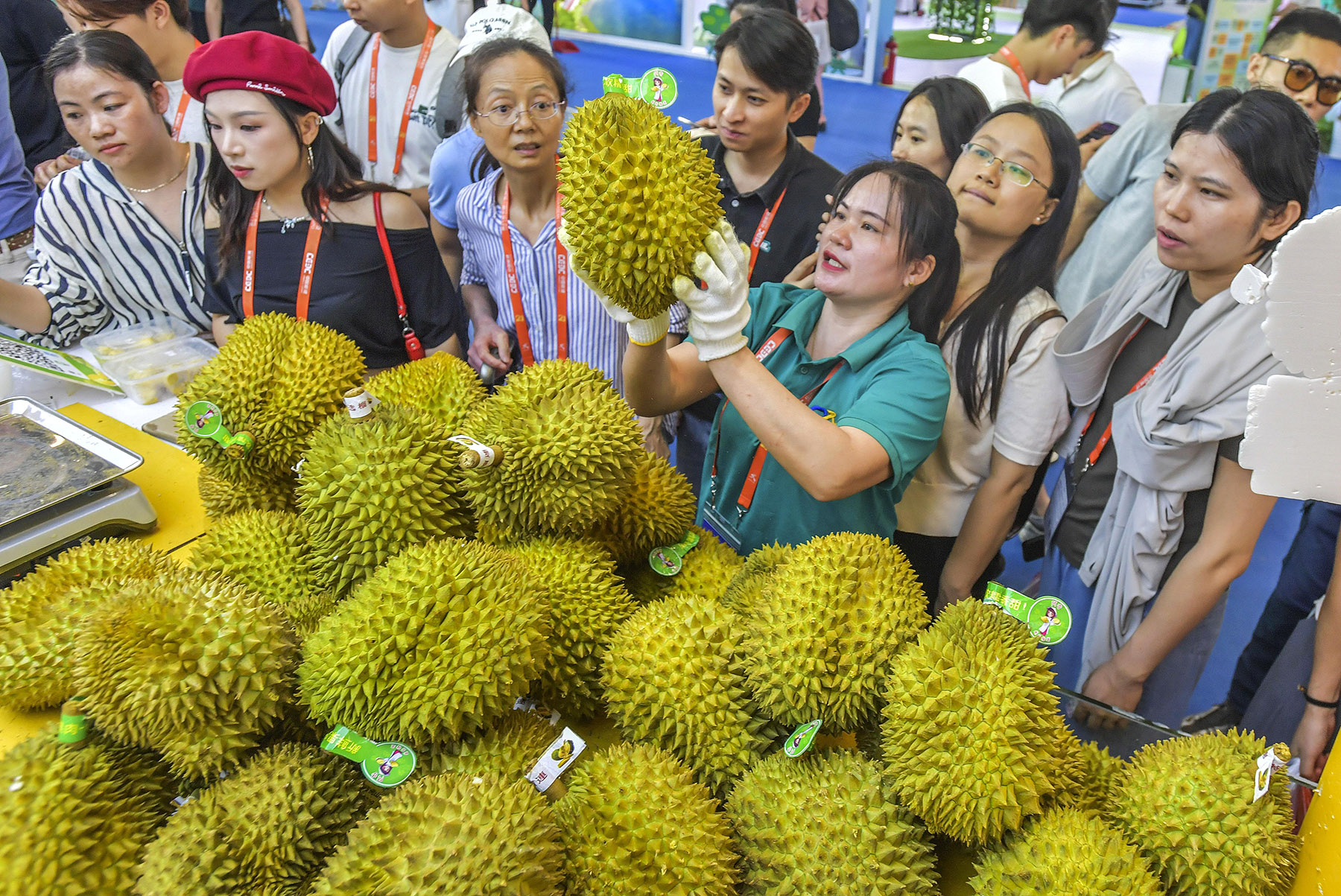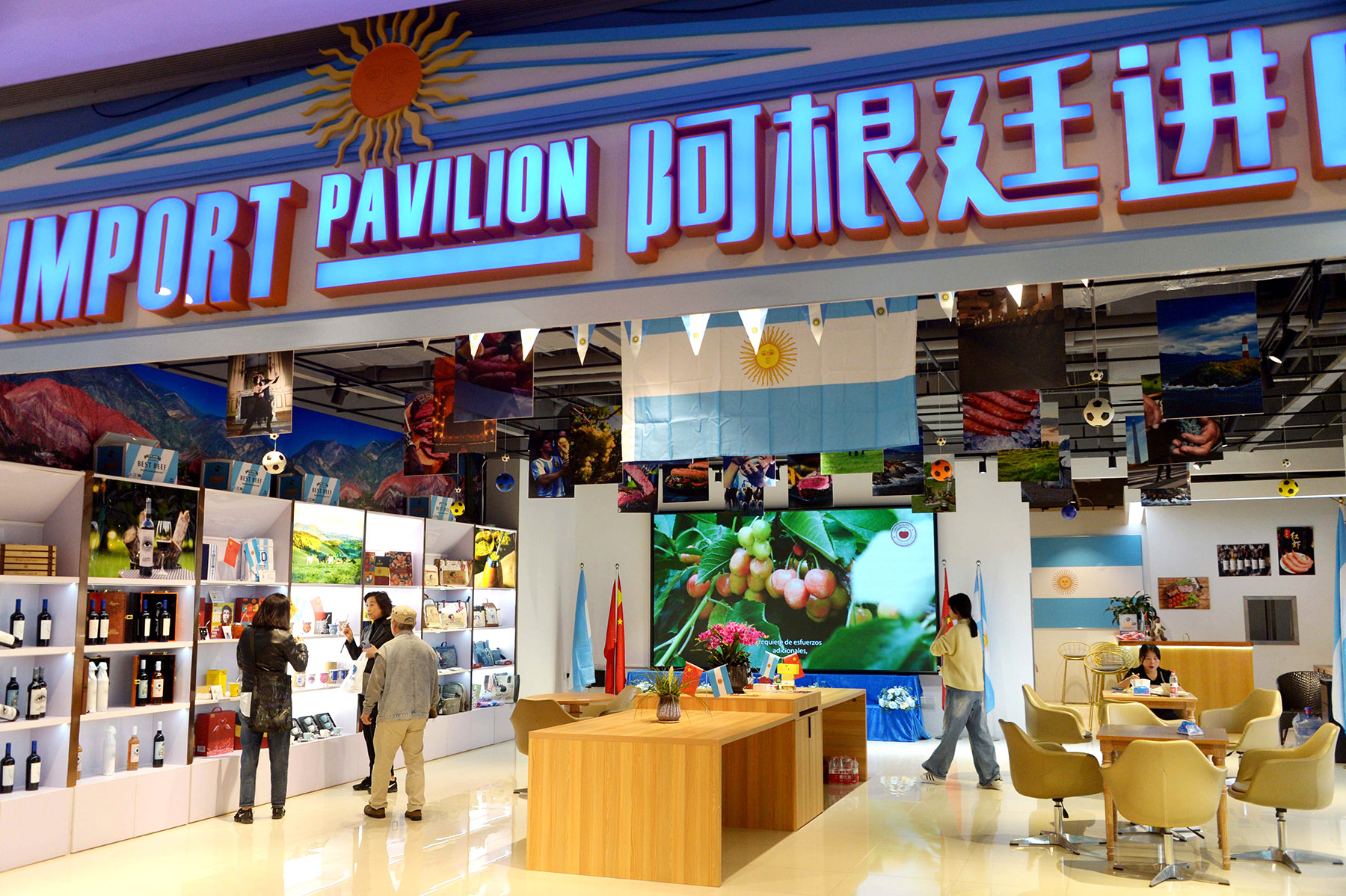Global economic uncertainties created by looming US trade tariffs in the New Year may be real; yet China’s efforts in trade diversification and tech advancement offer new paths for growth. Pundits hold diverse views on the economic outlook. Luo Weiteng reports.

A decade ago, China set out on an ambitious journey to retool the world’s second-largest economy and make itself heard technologically.
With 2025 upon us, the nation leads the pack in key industries like electric-vehicle manufacturing, energy and power generation, as well as high-speed rail and shipbuilding, and is catching up in other high-end innovation areas.
But, history rhymes. When the ambitious plan was launched as a multipronged initiative with top-down support and efforts coming from the bottom up, increased tariffs, sanctions and, more recently, an artificial intelligence chip ban by countries like the United States, sought to undermine its success.
With China determined to ascend the value chain and develop “new quality productive forces”, the global economy is bracing for yet another vexing year in 2025 in a new era of protectionism with menacing trade policies and tariffs.
READ MORE: China's efforts in opening-up, innovation to inject impetus into business
“China’s economic outlook will hinge heavily on how the external environment unfolds and Beijing’s response to it,” says Aidan Yao Yuan, senior investment strategist for Asia at the Amundi Investment Institute.
He warns that the Hong Kong Special Administrative Region — long hailed as the nation’s entrepot and offshore financial hub — is poised to experience the chilling effects of the trade skirmish with lower exports and, indirectly, through weaker investment amid growing skepticism.
Assuming that imports stay put, a combined, proposed tariff wall of 60 percent on all Chinese imports, and 20 percent from all other countries would lead to an overall US weighted average tariff rate of nearly 26 percent. This would be what investment services firm Charles Schwab calls the “highest level in over 100 years and the biggest risk to global growth”.
Navigating economic tides
However, citing a quote often attributed to novelist Mark Twain — It ain’t what you don’t know that gets you into trouble. It’s what you know for sure that just ain’t so — Jeffrey Kleintop, chief global investment strategist at Charles Schwab, says he doubts such an extreme tariff scenario can be fully enforced. What might catch markets by surprise would be tariffs coming and going quickly.
ALSO READ: China's government procurement prioritizes acquisition of NEVs
In his view, tariffs may still rise, but extreme tariff threats could simply be used by the incoming Donald Trump administration “as a tool of statecraft to extract actions or concessions, rather than as tools of economic policy”.
Yao sees such a “bargaining tool” characterization consistent with his “working assumption that tariffs will be executed on a phased and selective basis”.

As China faces a challenging start to 2025 with a 10-percent levy on its goods after Trump is inaugurated on Jan 20, Yao expects further adjustments to be subject to the progress of trade talks between the world’s two largest economies.
Bold moves like “Made-in-China 2025” have essentially boosted technology transfer, self-reliance and strength in innovation. This year, China may have more trade leverage than many think. Since the onset of the Sino-US trade row in 2018, China’s overall market share in the US had dropped by 7.7 percentage points to 13.9 percent by 2023, with even steeper declines in tariff-affected sectors, according to European bank ING.
READ MORE: Shanghai blazes path in growing debut economy
Yet, for higher value-added goods, diversifying imports away from China is no easy task. Smartphones, computers, lithium-ion batteries, toys and video game consoles together made up 27 percent of US goods imports from China in 2023, according to a recent study by the Atlantic Council GeoEconomics Center. “US reliance on China for these goods has hardly budged since 2017. In fact, China’s share of US battery imports had actually gone up during that time,” writes Josh Lipsky, a senior director of the council, noting that Chinese exporters, in turn, are not as dependent on the US market for these goods.
While asymmetry of dependencies of this kind always invites criticism, Richard Baldwin, a professor of international economics at IMD Business School, Lausanne, says this has nothing to do with China. “It has to do with China’s superpower standing in manufacturing,” he says, comparing it to the Group of Seven being massively more dependent on supplies from the Organization of the Petroleum Exporting Countries than the other way round.
Calling China “the world’s sole manufacturing superpower”, Baldwin notes that all major manufacturers worldwide source at least 2 percent of their industrial input from China. “Decoupling would be difficult, slow, expensive and disruptive,” he warns.
Policymakers and businesses are hoping for the best, yet preparing for the worst. The International Monetary Fund sees a mere 0.1-percent cut in global economic growth and a negligible drag on Chinese growth in 2025, assuming that 10-percent US tariffs are imposed on all Chinese imports, plus full-scale retaliation by Europe and China that’s equivalent to 10-percent tariffs on US exports and on all trade between China and the European Union implemented by mid-2025.
In Kleintop’s view, such cautious optimism could be explained by the fact that exports made up just 19 percent of China’s GDP in 2023, and the share of its economic output tied to US exports has now been lowered to nearly 3 percent despite the country being traditionally viewed as an export economy.
ALSO READ: Trade, trains and tech driving China-Europe connections forward
The diversity of pessimistic and optimistic views may reflect how political uncertainties in the year of elections in 2024 have been replaced by policy unknowns in 2025. While markets have taken uncertainties in their stride, Yao warns that sentiment could shift when actual policies are implemented.
For China, external pressures continue to weigh on domestic household and business sentiment. Gary Ng Cheuk-yan, senior economist of thematic research for Asia Pacific at Natixis Corporate and Investment Banking, said he believes the central government will likely pivot towards a growth stabilization agenda that should also benefit Hong Kong markets in restoring investor confidence.
“Yet, it won’t be a bazooka, but only measures to keep growth at a range comfortable to policymakers,” he says.
Amid an intricate web of short-and long-term challenges facing the Chinese economy, with the domestic property market still in the doldrums, Jasmine Duan, senior investment strategist at RBC Wealth Management Asia, says many of the long-term economic concerns are overblown.
“US and UK-based media coverage tends to amplify and may even exaggerate China’s challenges. They often overlook China’s substantial, advanced manufacturing capabilities that are second to none, and ignore the fact that China’s significant research and development spending is reaping important scientific advancements, especially in strategic technologies,” says Duan.
ALSO READ: China's competitiveness in manufacturing rises in 2024
The IMF sees China remaining, by far, the largest contributor to global growth in the next five years, accounting for 21.7 percent, compared with 14.8 percent from India, and 11.6 percent from the US.
Defying the rising protectionist and anti-trade rhetoric, integration and collaboration have roles to play.
After Sino-US trade tensions erupted, Asia has become more connected and sustained the strength of its exports, with the Regional Comprehensive Economic Partnership as one of the world’s largest trading blocs.
Advancing trade diversification
According to Amundi, intra-regional trade in emerging Asia (excluding Japan, South Korea, Taiwan, Singapore, Hong Kong and Macao) had risen to 23 percent of total exports in the first half of last year — up from 21 percent in 2018 and just 10 percent at the start of this century. Riding high on closer regional ties, “China still has scope at the central level to smooth down new US tariffs,” it says.

Beyond Asia, Russia, Eastern Europe, Oceania, Africa, Latin America and the Caribbean have also emerged as significant driving forces for China’s international trade. This depicts a broader picture where even though US tariffs have applied to approximately two thirds of Chinese exports to the US since 2018, the Chinese mainland’s global export share has been on the rise — from 12.7 percent in 2018 to 14.1 percent in 2023 — according to the World Bank.
Such trade diversification offers a vivid glimpse into how initiatives, such as the Belt and Road Initiative, the RCEP, the mechanism for Cooperation between China and Central and Eastern European Countries, and the Forum on China-Africa Cooperation, can have a meaningful impact.
ALSO READ: Corporations aim for more China presence
Mou Yiling, chief strategist at Shanghai-based Minsheng Securities, is optimistic about the huge, unmet need for better transportation and energy infrastructures from underserved populations involved in the BRI across the globe. Here, the economic and technological strength only tells part of the story. He highlights China’s expanding presence from the dimension of diplomacy, based on the Global Diplomacy Index published by Australia-based international policy think tank, the Lowy Institute.
In 2019, China had surpassed the US in terms of having the world’s largest diplomatic network, and has retained the top spot since. Worldwide, China is ahead diplomatically in Africa, East Asia, the Pacific Islands and Central Asia, and is evenly matched with the US in the Middle East and South America.
Zhong Zhengsheng, chief economist at Ping An Securities, says more stakeholders should form open, international partnerships, taking stock of successes, and understanding the challenges from regional development to trade connectivity, from tech revolution to environment impact. “Such a fertile source of fresh opportunities will essentially help China redefine its role in the evolving geoeconomic landscape molding the global stage,” he says.
Collaboration and integration are vital for Hong Kong in 2025 — an externally-oriented economy looking to strike a delicate balance between proactivity and fiscal prudence amid mounting concerns over Sino-US trade tensions and the city’s budget deficits.
“The key to success in 2025 is keeping our global outlook, while strengthening our regional connections, especially as businesses worldwide look for reliable ways to work across borders,” says Ivy Cheung Wing-han, vice-chairman of KPMG China and regional senior partner at KPMG in Hong Kong (SAR).
“The going won’t be easy, but Hong Kong has what it takes to stay ahead of the curve and punch above its weight,” says Yao.
READ MORE: Supply chain ties foster shared development
At a critical historic juncture, Pascal Siu Yat-kui, a senior researcher with think tank, Our Hong Kong Foundation, regards collaboration as “paramount”, focusing on expanding the overall pie rather than intra-regional rivalry within the Guangdong-Hong Kong-Macao Greater Bay Area.
What also matters for the region’s 11-city cluster, Siu says, is developing a complementary industrial chain through all-round collaboration and resource integration — from upstream basic research to midstream production and downstream marketing.
It’s an orchestration leveraging Hong Kong’s international research and legal advantages, as well as global market access, coupled with Shenzhen’s high-tech ecosystem, and the advanced manufacturing networks of Zhongshan, Foshan and Guangzhou, says Siu.

In a broader sense, there is a symphony of mainland companies going global despite geopolitical tensions, economic friction and ongoing conflicts striking a chord of dissonance. Behind the scenes is Hong Kong’s push to support the country’s external circulation and make it a compelling regional headquarters for mainland businesses carving out their paths in the economies of the Association of Southeast Asian Nations, as well as countries and regions engaged in the BRI, Siu notes.
In recent years, Hong Kong Productivity Council Chief Innovation Officer Du Yonghai, has helped many mainland companies map out routes for overseas expansion in Southeast Asia and regions beyond that. He calls himself a witness to the unfolding of a big story, where there’s no shortage of mainland firms embarking on global adventures, and gearing up for a structural shift in global supply chains and escalated geopolitical storms.
“Indeed, Hong Kong has long served as a testing ground and springboard for ambitious mainland enterprises ramping up their business footprint abroad,” says Du. “Once they can satisfy discerning local customers, and adapt to the city’s frameworks and regimes in line with international standards, they can expect to make a difference in the global arena.
READ MORE: Beijing moves to address ‘dynamic economic risks’
“This rings true and takes on new significance in the challenging year ahead. It’s also why I always tell mainland firms making inroads into Hong Kong they should think big and set their sights high. Hong Kong has all the elements needed to bolster their global vision along the path of progress.”
In an uncertain world, hard-won certainties arise from pursuits of digital transformation, and a green and sustainable future. Other less conflict-prone sectors for growth are healthcare and biotechnology, education and upskilling, and tourism and leisure, Siu notes.
“For businesses, digital transformation and sustainability are more than trends. They are becoming essential for long-term success,” says Cheung, suggesting a closer look at opportunities across the Greater Bay Area, particularly in innovation and green development.
For investors, she suggests a strategic thinking of portfolio diversification, with an eye on emerging sectors, particularly technology and sustainable infrastructure.
Cheung says it’s vital for ordinary people to upskill themselves, particularly in digital literacy and sustainability.
“The common thread here is adaptability,” she says.
Contact the writer at sophialuo@chinadailyhk.com


